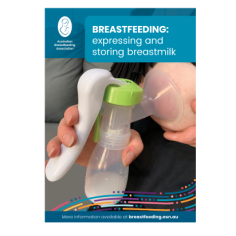Pacing feeds can make bottle-feeding more like breastfeeding.

Breastfed babies are used to controlling how much milk they take at each feed. They come off the breast when they’ve had enough.
However, when babies are fed from a bottle, they have less control. It’s easy to overfeed a baby as they will tend to take more milk than they really need at each feed.
Breastfed babies are also used to being able to control the flow of milk as they feed. They may find it quite stressful feeding from a teat with a fast flow. The baby may look like they are very hungry and gulping the milk down. However, they might just be swallowing fast so they don't choke.
One way to avoid both of these problems is to pace the bottle feeds.
This information is relevant for mums and carers. Anyone feeding a baby with a bottle can use paced feeding techniques.
It applies whether you are feeding expressed breastmilk or formula to the baby. In both cases, prepare and offer feeds in small amounts.
Why give baby control of the pace of feeds?
-
It allows your baby to drink the amount they want, rather than being given too much.
-
Giving baby only as much as they need from the bottle means they will be ready to breastfeed well when you are together. This helps your milk supply.
-
If you give only the amount the baby needs, you don’t need to spend as long expressing to keep up with the amount of milk your baby is being (over)fed.
How to pace feeds
-
Watch for signs that baby is hungry rather than feeding to a time schedule. You will see this when baby gets restless, sucking their fingers or moving their head side to side. Older babies may cry and be harder to comfort without a feed.
-
Try other settling techniques such as a nappy change, cuddle or a walk around first. If they are obviously hungry though, offer a feed.
-
Hold baby in an upright position, supporting baby’s head and neck with your hand rather than with your arm.
-
Use a slow-flow teat.
-
Gently brush the teat down the middle of baby’s lips, particularly the bottom lip. This encourages baby to open their mouth wide. It allows you to place the whole teat into their mouth, like they draw the breast in when breastfeeding. Don't push the teat into the baby's mouth, let baby take it.
-
Tip the bottom of the bottle up just far enough for the milk to fill the teat. As the feed goes on, you will need to let the baby gradually lean backwards more and more so that the teat stays filled with milk.
-
Keep the baby’s head and neck lined up. At the start of the feed the bottle is more horizontal and by the end of the feed, the bottle will be almost vertical.
-
Let the baby rests every few minutes. This will help to stop them drinking too much, too fast.
-
Allow the baby to decide when to finish the feed. They may not need to drink all the milk in the bottle.
© Australian Breastfeeding Association October 2022
Read more about preparing and feeding expressed breastmilk
Evidence-led info and practical tips from our Breastfeeding Information Series
Breastfeeding: expressing and storing breastmilk





